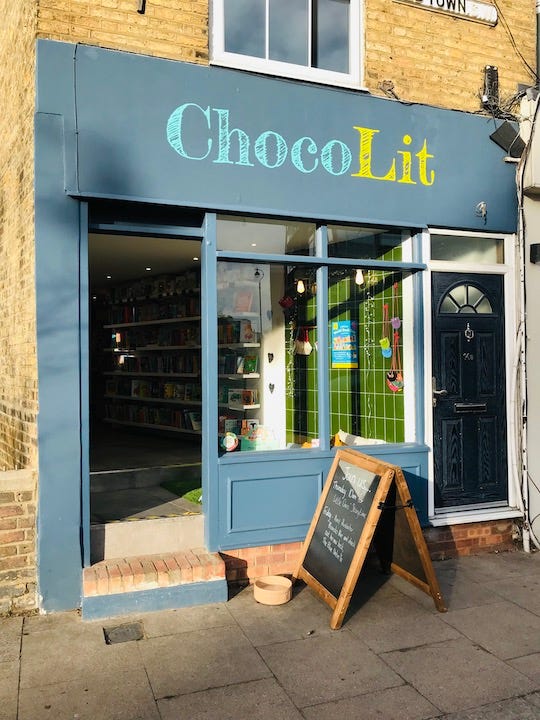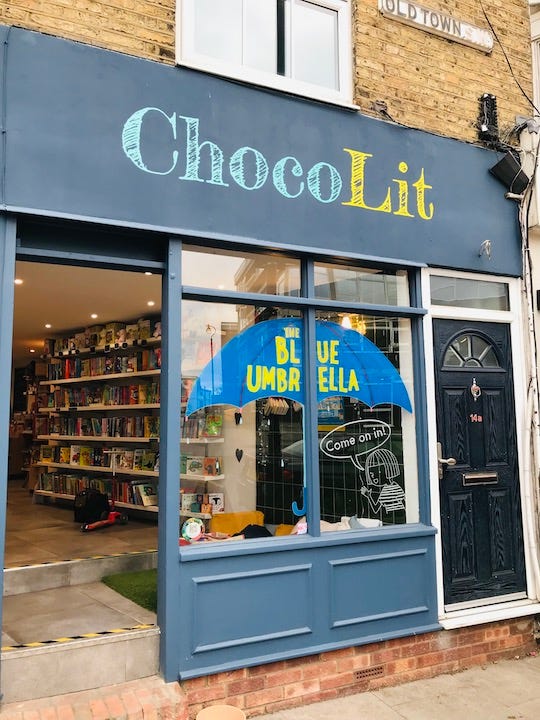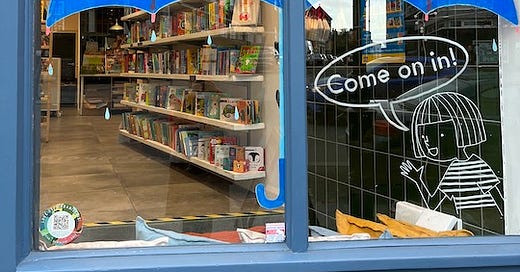The Blue Umbrella Window


The Blue Umbrella written by Emily Ann Davison and illustrated by me just came out (on 2nd Feb 2023) and my local bookshop, ChocoLit, let me paint their window to promote the book. Back in 2020, I did my very first window painting at Tales on Moon Lane and I wrote about it. I had such a fun day at ChocoLit. I thought I'd write about window painting again. So, this post is a kind of follow-up post to share what I learned from past window painting experiences and how I applied to this window and what I learned this time.
HOW IT STARTED
This is how. I saw my friends - Chris Naylor-Ballesteros and Ged Adamson had painted the ChocoLit's window on Instagram and I commented on the posts. On a separate day, I posted about my then-upcoming book, The Blue Umbrella, on my account, then the shop owner, Martina, sent me a message "Don't suppose you fancy doing an umbrella window and signing?". I said yes!
BEFORE THE DAY
Ask the bookshop for the window measurements - This is very important if you're making a guide template. If possible, recce the venue and see what's behind the window. If not, try to find pictures of the window done by other people to get some ideas. Knowing what you see behind the window from outside helps your window design. For example, ChocoLit had the only one window so I made sure my design has a plenty of negative space so it wouldn't block the view into the shop.
Make the template - Read my previous post on window painting for how to make a template. To print the image at the actual size over multiple sheets of paper, save the image as PDF. Open the file in Adobe Acrobat Reader. Go to Print and select Page Sizing & Handling - Poster.



